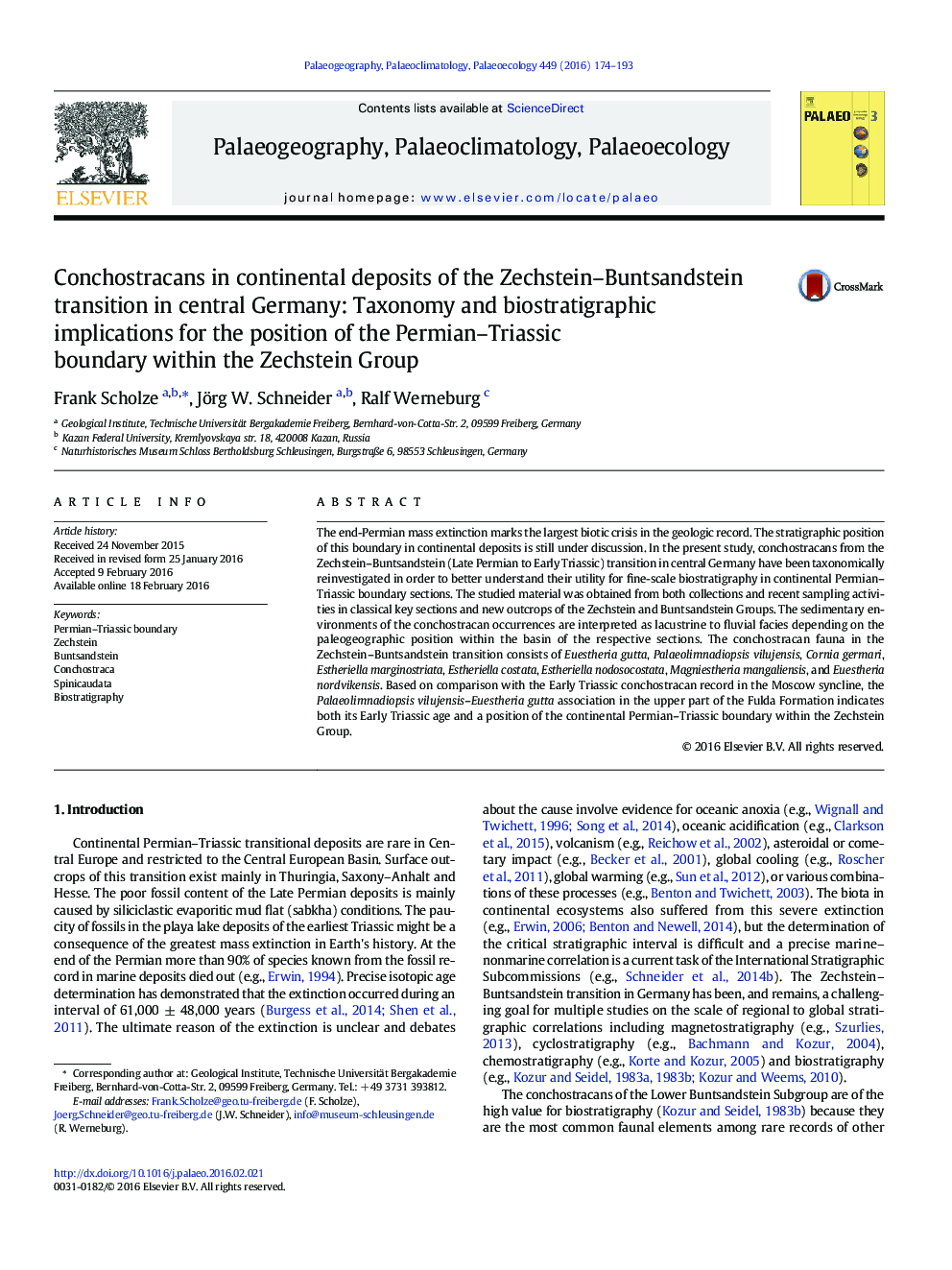| کد مقاله | کد نشریه | سال انتشار | مقاله انگلیسی | نسخه تمام متن |
|---|---|---|---|---|
| 4465759 | 1622142 | 2016 | 20 صفحه PDF | دانلود رایگان |

• Conchostracans of the Zechstein–Buntsandstein transition in Germany were studied.
• Conchostracans have high value for biostratigraphy in continental deposits.
• An Early Triassic fauna was recorded in the upper Fulda Formation (Zechstein Group).
• The new biostratigraphic data is used for comparison with the Moscow syncline.
• A position of the Permian–Triassic boundary within the Zechstein Group is indicated.
The end-Permian mass extinction marks the largest biotic crisis in the geologic record. The stratigraphic position of this boundary in continental deposits is still under discussion. In the present study, conchostracans from the Zechstein–Buntsandstein (Late Permian to Early Triassic) transition in central Germany have been taxonomically reinvestigated in order to better understand their utility for fine-scale biostratigraphy in continental Permian–Triassic boundary sections. The studied material was obtained from both collections and recent sampling activities in classical key sections and new outcrops of the Zechstein and Buntsandstein Groups. The sedimentary environments of the conchostracan occurrences are interpreted as lacustrine to fluvial facies depending on the paleogeographic position within the basin of the respective sections. The conchostracan fauna in the Zechstein–Buntsandstein transition consists of Euestheria gutta, Palaeolimnadiopsis vilujensis, Cornia germari, Estheriella marginostriata, Estheriella costata, Estheriella nodosocostata, Magniestheria mangaliensis, and Euestheria nordvikensis. Based on comparison with the Early Triassic conchostracan record in the Moscow syncline, the Palaeolimnadiopsis vilujensis–Euestheria gutta association in the upper part of the Fulda Formation indicates both its Early Triassic age and a position of the continental Permian–Triassic boundary within the Zechstein Group.
Figure optionsDownload high-quality image (494 K)Download as PowerPoint slide
Journal: Palaeogeography, Palaeoclimatology, Palaeoecology - Volume 449, 1 May 2016, Pages 174–193